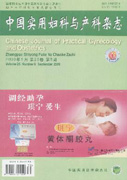|
|
Assessment of prenatal diagnosis testing in twin pregnancies.
CAI Lu-yao,SUN Lu-ming
2020, 36(2):
101-104.
DOI: 10.19538/j.fk2020020102
Invasive prenatal testing(eg,chorionic villus sampling or amniocentesis)remains the standard for diagnosis of fetal genetic disorders. We post a comprehensive introduction to the twins' label system, different sampling techniques and procedure-related risks. This article can provide reference for clinicians to offer patients evidence-based consultation and individual management for twin pregnancies.
|

